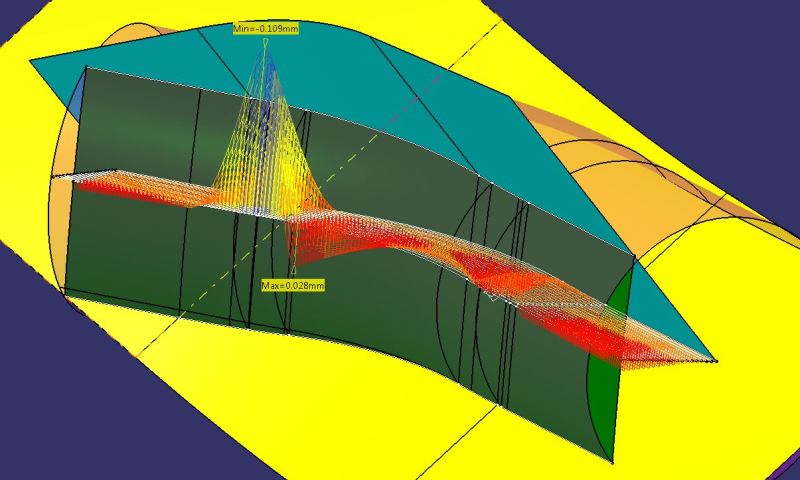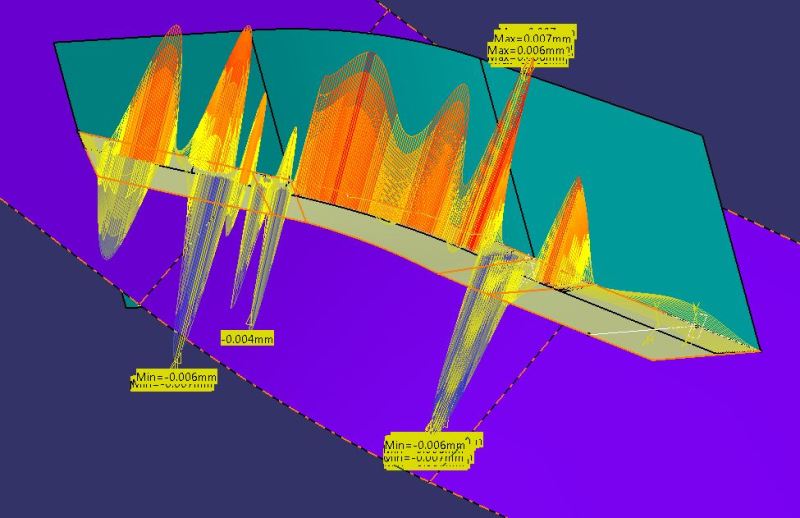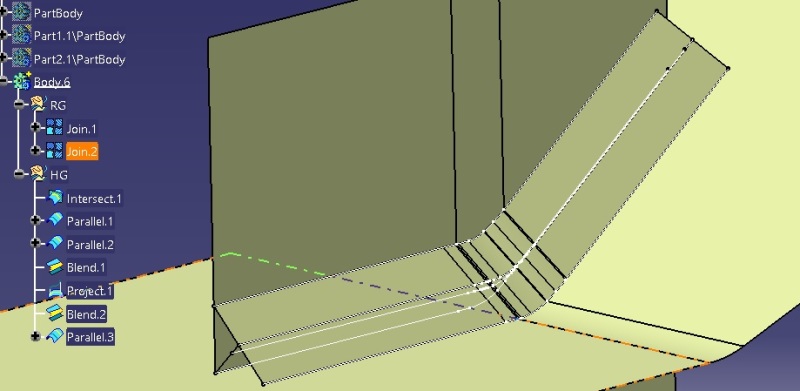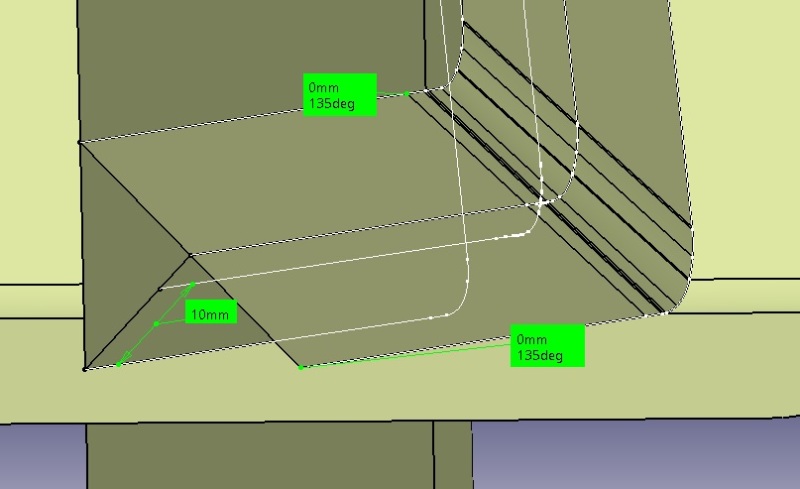mtweeman
Mechanical
- Jan 17, 2012
- 7
Hello!
I have a model with two surfaces, which are intersecting. Looks like below:
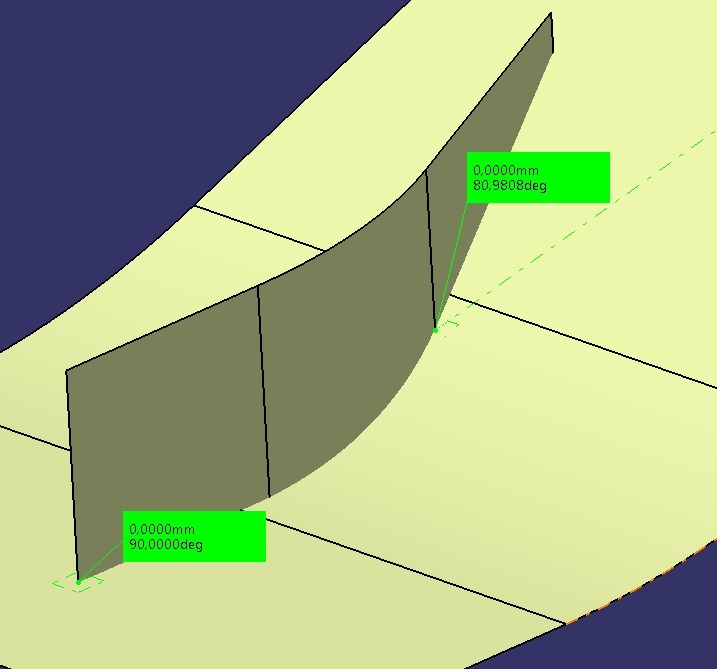
As you can see the angle between these surfaces changes as we go along the intersection curve.
What I need to do is a surface in CATIA which will be bisector of the angle made by two given surfaces. Of course it should go all along, so the bisector suface should adjust when the angle changes.
Is that possible? If you don't have any plain answer, please, give me some hints, etc. Any help will be appreciated.
I have a model with two surfaces, which are intersecting. Looks like below:

As you can see the angle between these surfaces changes as we go along the intersection curve.
What I need to do is a surface in CATIA which will be bisector of the angle made by two given surfaces. Of course it should go all along, so the bisector suface should adjust when the angle changes.
Is that possible? If you don't have any plain answer, please, give me some hints, etc. Any help will be appreciated.

